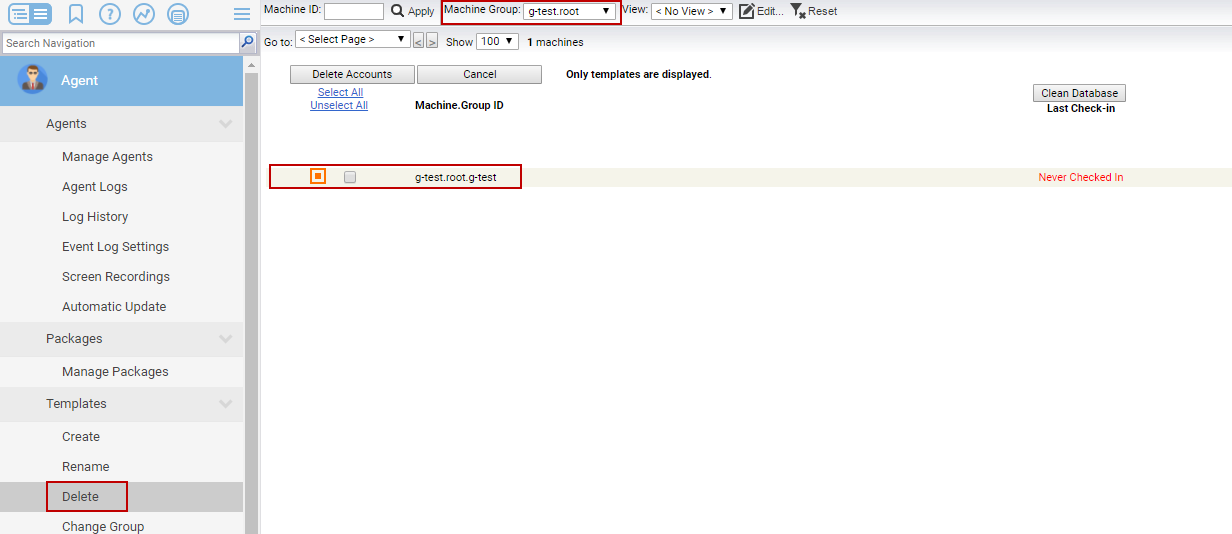

- #REMOVE KASEYA AGENT INSTALL#
- #REMOVE KASEYA AGENT PATCH#
- #REMOVE KASEYA AGENT PASSWORD#
- #REMOVE KASEYA AGENT WINDOWS#
ID of the agent procedure that you want to run on a specific agent, on the Kaseya server. ID of the agent on which you want to run the specific agent procedure on the Kaseya server. ] operation: Run Agent Procedure Input parameters Parameter ] operation: Get Agent Procedures Input parameters The output contains the following populated JSON schema:
#REMOVE KASEYA AGENT PATCH#
Retrieves the patch status of a specific agent machine from the Kaseya server, based on the Agent ID that you have specified. Runs an immediate scan for missing patches on a specific agent machine on the Kaseya server, based on the Agent ID that you have specified. Retrieves the audit summary for a specific agent machine from the Kaseya server, based on the Agent ID that you have specified.
#REMOVE KASEYA AGENT WINDOWS#
Retrieves an array of program entries that are present in the add/remove list of Windows machines from the Kaseya server, based on the Agent ID that you have specified. Schedules the latest audit for a specific agent on the Kaseya server, based on the the Agent ID and other input parameters and schedule properties that you have specified. Runs a latest audit on a specific agent on the Kaseya server based on the Agent ID that you have specified. Schedules a specific agent procedure on a specific agent on the Kaseya server based on the the Agent ID, Agent procedure ID, and other input parameters and schedule properties that you have specified.Ĭancels a scheduled agent procedure running on a specific agent machine on the Kaseya server, based on the Agent ID and Agent Procedure ID that you have specified.

Runs a specific agent procedure on a specific agent on the Kaseya server, based on the Agent ID and Agent Procedure ID that you have specified. Retrieves an array of agent procedures from the Kaseya server.

Retrieves an array of agent records from the Kaseya server. The following automated operations can be included in playbooks and you can also use the annotations to access operations from FortiSOAR™ release 4.10.0 and onwards: Function Specifies whether the SSL certificate for the server is to be verified or not.
#REMOVE KASEYA AGENT PASSWORD#
Password for the Kaseya server to which you will connect and perform the automated operations. Username for the Kaseya server to which you will connect and perform the automated operations. URL of the Kaseya server to which you will connect and perform the automated operations. In FortiSOAR™, on the Connectors page, click the Kaseya connector row, and in the Configuration tab enter the required configuration details.
#REMOVE KASEYA AGENT INSTALL#
Therefore, you must set up your FortiSOAR™ repository and use the yum command to install connectors:įor the detailed procedure to install a connector, click here Prerequisites to configuring the connector Version informationĪll connectors provided by FortiSOAR™ are delivered using a FortiSOAR™ repository. Add the Kaseya connector as a step in FortiSOAR™ playbooks and perform automated operations, such as running and scheduling agent procedures, running and scheduling audits and patch scans etc., on Kaseya. This document provides information about the Kaseya connector, which facilitates automated interactions with Kaseya using FortiSOAR™ playbooks. Kaseya is IT management and monitoring tool used to perform operations for agent procedure, audit and patch scan.


 0 kommentar(er)
0 kommentar(er)
